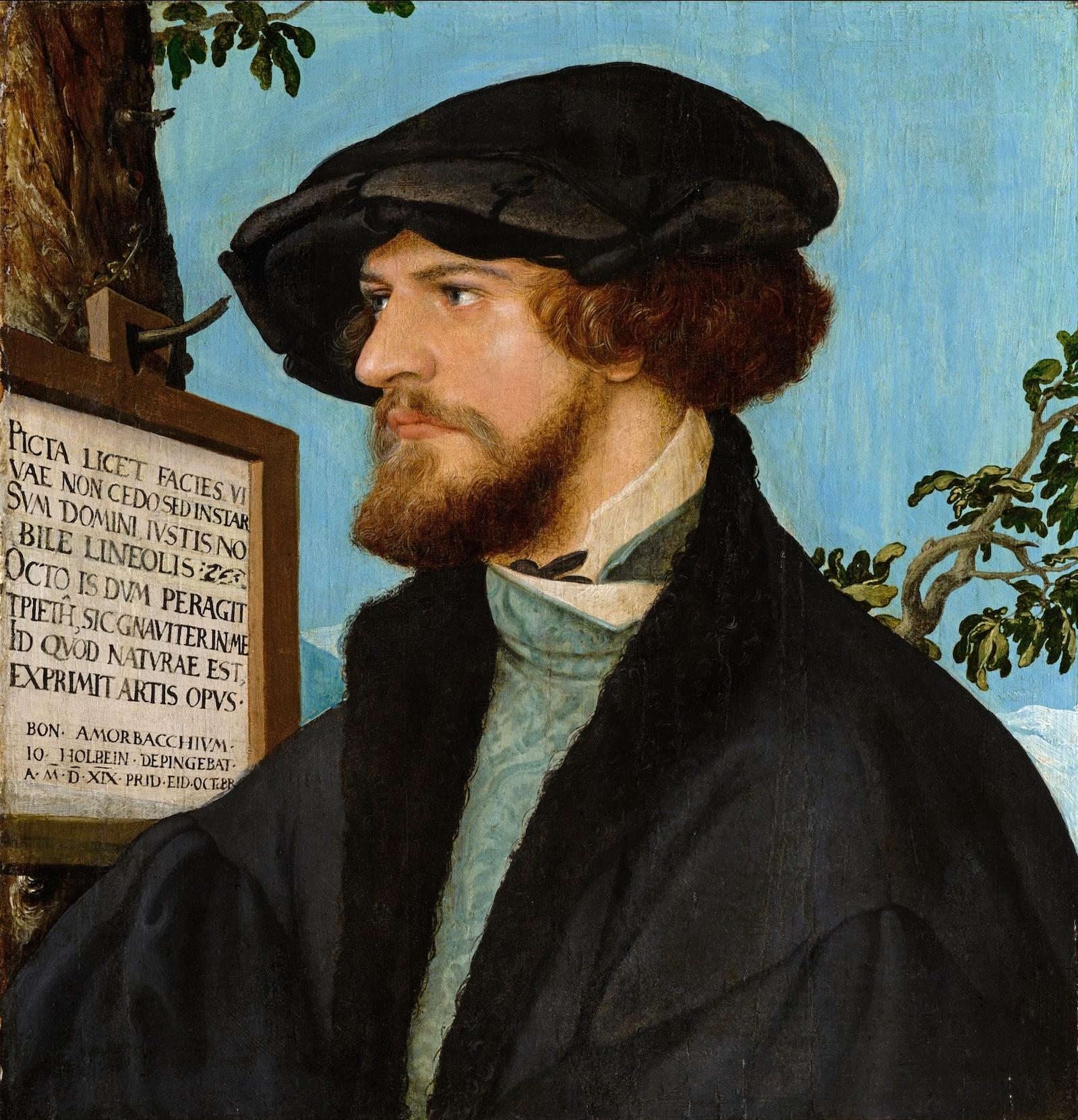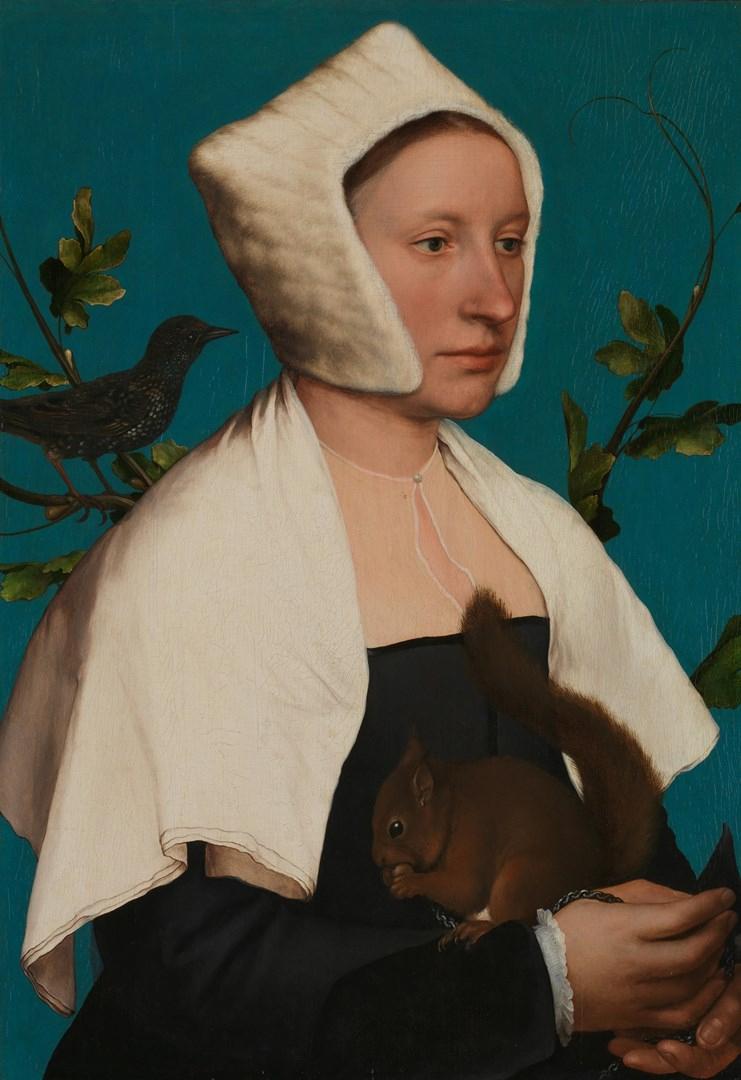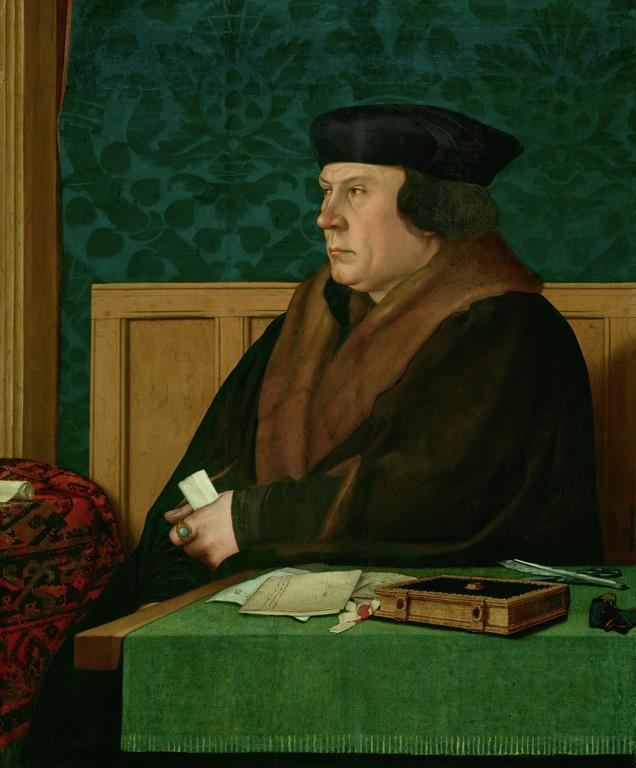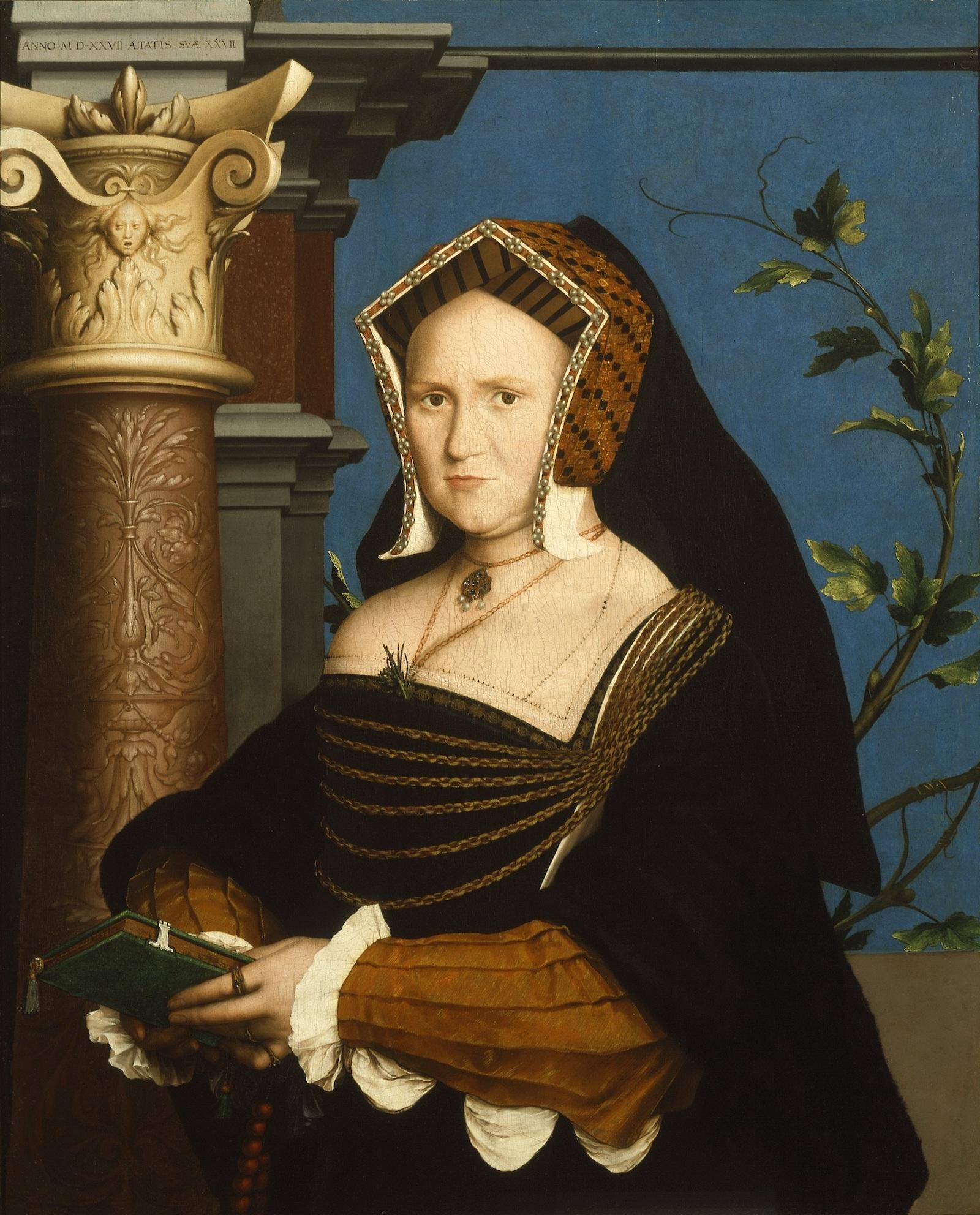A Lady with a Squirrel and a Starling (Anne Lovell?), painted in 1526-28, looks nothing like James Stewart, but within the composition Holbein, like Hitchcock after him, incorporates items specific to his sitter, building character by expressing profession, passions, and social standing. Here we also find him showboating–exhibiting a deft hand at numerous varied textures like bare skin covered with sheer bodice, the folds of a linen shawl, the iridescent feathers of a starling, and the unruly fur of a squirrel’s tail. Those last two items were added later, requiring the artist to rework the subject’s hands. But it mattered because the squirrel and starling are on the family crest.
His 1523 portrait of Erasmus, the celebrity Dutch intellectual of the era, shows him at a three-quarter-angle, his hands on a bound volume, the spine of which reads “Herculean labors”. Behind him are a renaissance pilaster and some books on shelves, one inscribed with the words “No one will as easily be my imitator as my critic.” It was regarded as the definitive likeness of Erasmus, who had copies made and distributed to friends.

































